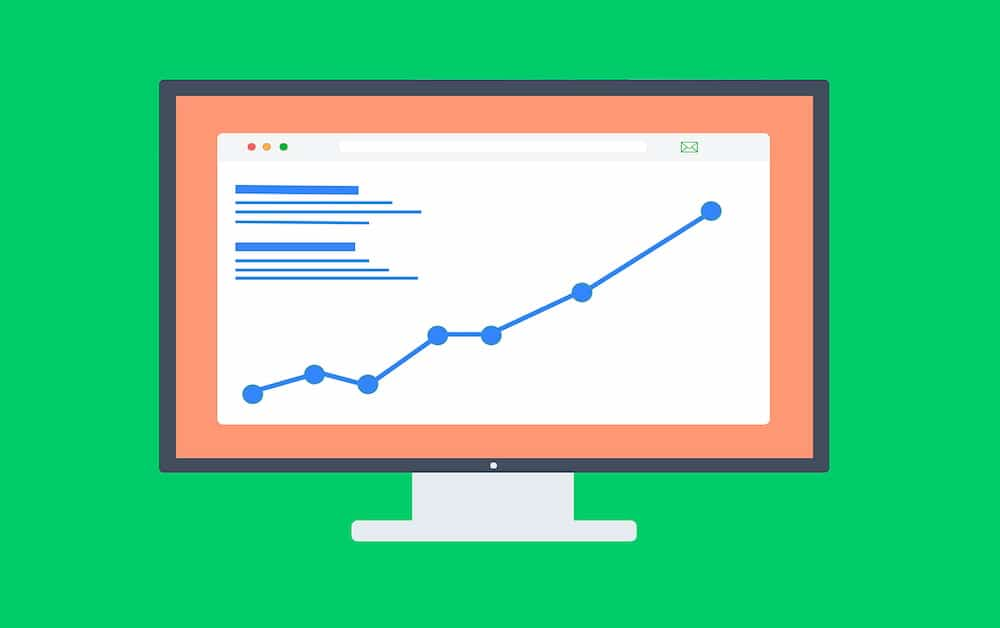Introduction
Digital advertising is currently undergoing a major transformation as the use of third-party cookies declines. This shift is reshaping the landscape of online marketing, with significant implications for platforms like Google Ads, the methods used for user tracking, and the overall strategies advertisers employ to optimize their campaigns.
As third-party cookies become less reliable, advertisers face the challenge of finding new ways to reach and understand their audiences. The decline of these cookies emphasizes the need for transparency and privacy, prompting a re-evaluation of traditional tracking and targeting methods.
Effective data sharing is essential in this context, as it allows advertisers to gain insights, achieve accurate advertising metrics, and foster collaboration among industry players, all while navigating the evolving landscape of digital marketing and increasing consumer privacy concerns.
To successfully navigate this new environment, advertisers must explore alternative strategies, such as using first-party data, enhancing contextual advertising, and leveraging new technologies like machine learning and artificial intelligence. These methods can help maintain effective targeting and measurement while ensuring compliance with evolving privacy regulations.
Additionally, it’s crucial for advertisers to embrace privacy-centric approaches that prioritize user consent and data protection. Adapting to these changes will not only help advertisers continue to thrive in a cookie-less future but also build trust with consumers.
In this comprehensive guide, we will explore various strategies and best practices that can help you keep your Google Ads campaigns running effectively in the wake of the cookie decline. From leveraging customer data to optimizing ad placements, we’ll cover essential tactics to ensure your advertising remains impactful and responsible.
Understanding the Cookie Decline

The Decline of Cookies Affects Google Ads Targeting and Measurement Capabilities
Third-party cookies have long been the cornerstone of Google Ads for tracking user behavior, enabling advertisers to deliver targeted ads and optimize campaign performance. However, with growing concerns over online privacy and regulations such as GDPR and CCPA, cookies have come under scrutiny. Major browsers like Safari and Firefox already block cookies by default, and Google Chrome plans to phase them out entirely, signaling a shift in how tracking data is collected.
For Google Ads, this shift affects attribution data and conversion data. Advertisers rely on cookies to identify users across multiple visits and devices, but without these tracking technologies, connecting ad impressions to user actions becomes more challenging. Consequently, the accuracy of metrics such as return on ad spend (ROAS) and cost per acquisition (CPA) is compromised, leaving marketers with fewer insights.
Google Ads Relies on Cookies to Track User Behavior and Deliver Targeted Ads
Cookies allow Google Ads to target users based on their browsing history, online activity, and previous interactions with ads. They enable ad platforms to recognize the same person across websites and mobile devices, ensuring ads are relevant. The loss of this capability forces advertisers to rethink their strategies for ad targeting, bidding, and optimization.
Without cookies, the ability to personalize ads for users who have shown interest in certain products or services diminishes. Furthermore, essential cookies that help advertisers track users and measure campaign performance face restrictions, which can disrupt demand-side platforms and ad networks.
Alternatives to Cookie-Based Targeting

Contextual Targeting as a Viable Alternative
One of the most promising alternatives to cookie-based targeting is contextual targeting. Instead of relying on user behavior, contextual targeting uses the content of web pages to determine ad relevance. For example, ads for hiking gear can appear in articles about outdoor adventures. This approach eliminates the need to track cookies and protects user privacy while maintaining relevance.
By leveraging Google’s advanced algorithms, advertisers can analyze page content, including keywords and sentiment, to serve ads that align with the context. Contextual targeting ensures that advertisers continue reaching their target audience without depending on invasive tracking technology.
Leveraging First-Party Data for Targeting
First-party data, collected directly from users through interactions with your website or app, has become indispensable. Site owners can use data such as email addresses, user visits, and purchase history to create personalized campaigns. Unlike third-party cookies, first-party data is directly shared by users with consent, aligning with privacy regulations.
Integrating this data into Google Ads can help advertisers create more accurate targeted ad groups. For example, data from user visits on Android phones can help advertisers identify users with specific interests, allowing them to refine their campaigns.
Navigating Google Consent Mode and Ad Blockers

Communicating Consent Choices with Google Consent Mode
Google Consent Mode provides a framework for advertisers to comply with user privacy regulations while maintaining ad functionality. A consent banner plays a crucial role in managing user consent for data collection and Google tag implementation. When users interact with a cookie banner and provide consent signals, Consent Mode adjusts how tracking data is collected. For instance, it enables Google tags to operate in a limited capacity if users opt-out of tracking.
By respecting users’ consent choices, advertisers can still collect enough data for campaign optimization. Implementing Consent Mode ensures that companies can track users responsibly while protecting user privacy.
Addressing Ad Blockers and Their Impact
Ad blockers present another challenge, as they block ads from loading on web pages, significantly impacting ad visibility. Popular browser extensions like Adblock Plus reduce ad visibility, affecting ad platforms and revenue streams. To counter this, advertisers should focus on creating non-intrusive ads that users are less likely to block.
Additionally, advertisers can rely on tools like hashed identifiers, which anonymize data while tracking browsing behavior. These methods help ensure that users see ads without compromising their online privacy.
Leveraging First-Party Data for Google Ads

The Growing Value of First-Party Data
As third-party cookies disappear, first-party data is now more valuable than ever. Data directly collected from users helps advertisers tailor campaigns without relying on external data brokers. For example, details from a user’s browsing behavior, purchases, or interactions on a website can help identify users for targeted advertising.
Advertisers can also use first-party data to analyze patterns in browsing history and refine ad targeting strategies. This approach ensures that advertisers can continue to maximize conversions while safeguarding user privacy.
Integration of First-Party Data with Google Ads
To fully utilize first-party data, integrating it with Google Ads is crucial. Tools like Google Analytics provide insights into user activity, enabling advertisers to align their strategies with audience preferences. For example, data from an Android phone can reveal key demographics, which advertisers can use to optimize their campaigns.
By combining first-party data with attribution data, advertisers gain a clearer picture of their audience’s journey. This helps in creating more effective ad campaigns and improving conversion data accuracy.
Optimizing Google Search Campaigns in a Cookieless World

Using Keyword Intent and Retargeting for Optimization
Google Search campaigns can still thrive by focusing on keyword intent and ad engagement. Keywords remain a powerful tool for targeting users based on their search queries. By analyzing search patterns, advertisers can anticipate user needs and deliver ads that align with their interests.
Retargeting also plays a critical role, even without cookies. Using contextual data and hashed identifiers, advertisers can re-engage users who previously interacted with their ads or website. This approach ensures that campaigns remain effective, even with limited tracking data.
Employing Advanced Bidding Models
In a cookieless world, maximizing conversions requires innovative bidding strategies. Google Ads offers automated bidding models that consider contextual signals, such as browser cache and user agent data. By analyzing these signals, advertisers can optimize bids to target users effectively, even without tracking cookies.
Offline signals and hashed passbacks provide additional ways to enhance bidding accuracy. For example, combining offline purchase data with online activity allows advertisers to refine their targeting and achieve better results.
Measuring Success in a Cookieless World

Adopting New Approaches to Tracking and Attribution
Measuring success without cookies demands creative solutions. UTMs and referrer data can help advertisers understand the effectiveness of their campaigns, even if tracking cookies are unavailable. For example, linking ad performance to specific web pages or other websites provides valuable insights into user behavior.
By focusing on directionally accurate data, advertisers can identify trends and adjust their strategies accordingly. This approach helps compensate for the loss of granular tracking data.
Utilizing Data from Ad Networks and Exchanges
Ad networks and exchanges remain valuable sources of attribution data. They aggregate information from various sources, enabling advertisers to measure the impact of their campaigns. Demand-side platforms can also help advertisers analyze ad performance and maximize conversions.
Future-Proofing Your Google Ads Strategy

Adapting to New Technologies and Regulations
To thrive in a privacy-first era, advertisers must adapt to emerging technologies and regulatory requirements. Google is investing in solutions like the Privacy Sandbox, which aims to replace cookies with less invasive tracking tools. Staying informed about these developments ensures advertisers can remain competitive.
Additionally, focusing on transparency and user choice builds trust. For example, clear consent banners and easy-to-understand privacy policies demonstrate a commitment to protecting user privacy.
Emphasizing First-Party Data and Contextual Targeting
The future of Google Ads lies in first-party data and contextual targeting. By relying on data that users willingly share, advertisers can create meaningful connections without compromising privacy. Combining this approach with contextual insights ensures ads remain relevant and effective.
Investing in these strategies not only future-proofs campaigns but also positions advertisers as responsible and innovative players in the digital advertising landscape.
By leveraging first-party data, contextual targeting, consent tools, and advanced analytics, advertisers can navigate the challenges of a cookieless world. While the loss of cookies requires significant adjustments, it also opens opportunities for innovation and enhanced user privacy. With the right strategies, Google Ads can continue delivering impactful results in the evolving digital landscape.



